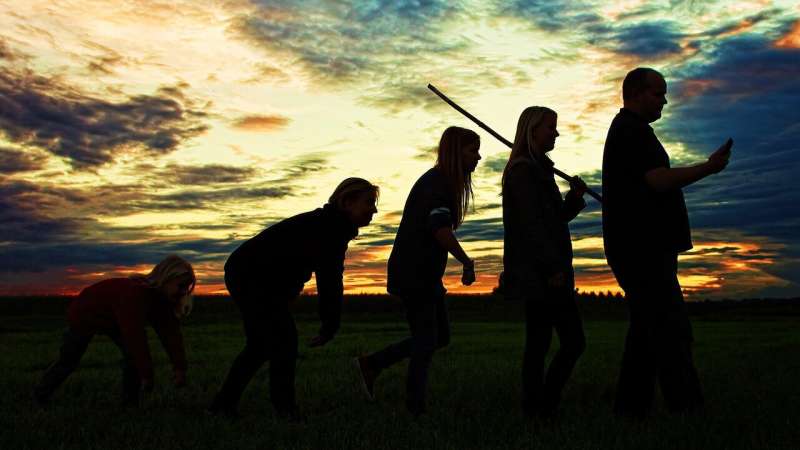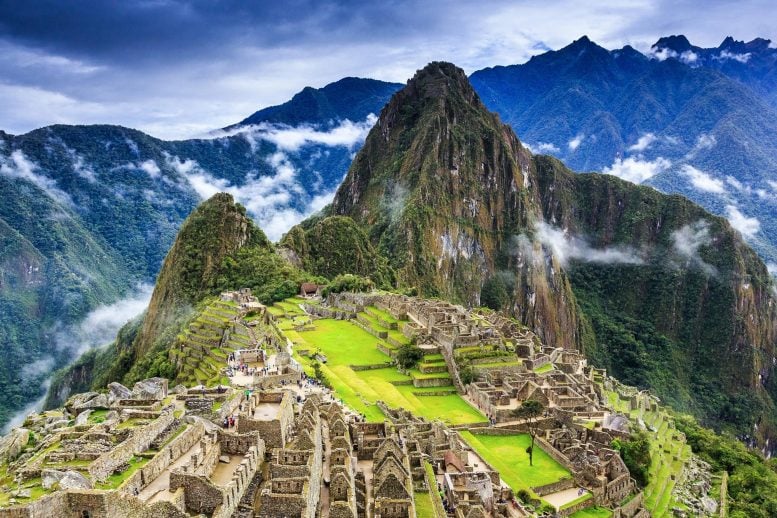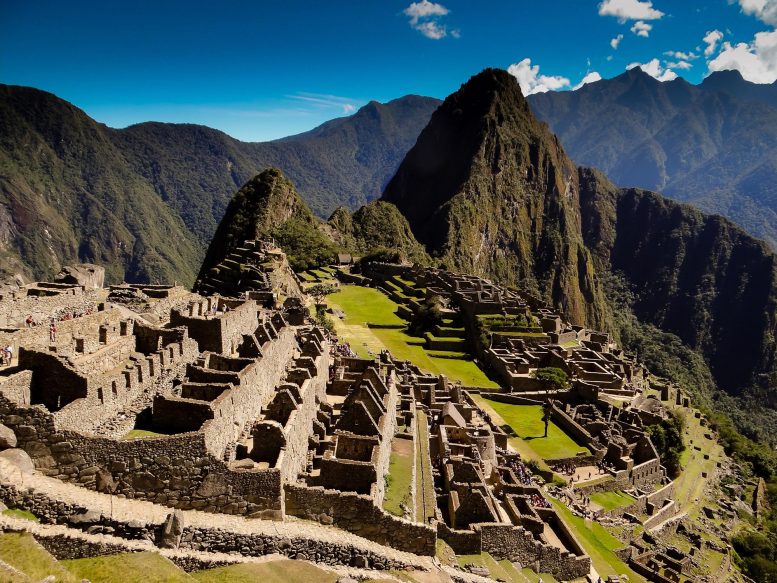“Before the Big Bang” –Vestiges of a Prior Universe? (Weekend Feature)
![]()
“Eliminating the singularity or Big Bang– which has its origins in the late 1920s when US astronomer Edwin Hubble discovered that almost all galaxies are moving away from each other at ever-faster velocities– brings back the bouncing Universe on to the theoretical stage of cosmology. The absence of a singularity at the start of spacetime opens up the possibility that vestiges of a previous contraction phase may have withstood the phase change (between contraction to expansion) and may still be with us in the ongoing expansion of the Universe,” said Brazilian physicist Juliano Cesar Silva Neves.
A Universe Prior to the Big Bang
Although for five decades, the Big Bang theory has been the best known and most accepted explanation for the beginning and evolution of the Universe, it is hardly a consensus among scientists. Physicists are now assuming the possibility of vestiges of a Universe previous to the Big Bang.
The Big Bounce
“The idea of a “big bounce” has existed in some form or another for decades,” writes Jonas Mureika, theoretical physicist and physics chair at Loyola Marymount University and the Kavli Institute for Theoretical Physics, UC Santa Barbara, in an extraordinary email to The Daily Galaxy. “The basic idea is to avoid the singularity at t=0 (time of the Big Bang) and r=0 (where all matter and energy were compressed into an infinitesimally small volume), since our mathematical description of spacetime (and thus our favorite theories) break down at that point. This is similar to problems in black hole physics, which itself has similar fixes to remove the singularity.”
“The Quantum Fix”
“The crux of the problem,” observes Mureika, “is that our description of this physics is classical, i.e. a prediction of General Relativity, and that’s why singularities arise. The theories just don’t work in that limit. It is most likely the case, however, that the physics governing the realm of classical singularities — extremely small and extremely high energy — is quantum in nature. So, the rules change in some fascinating ways and introducing us to new physics allows this to make sense.”
“When classical physics breaks down, we look to replace the broken parts with a quantum fix. If the singularity is at r=0, then one of the ways we can avoid this is to not let the physics act at r=0. That is, we impose a minimal length (usually the Planck length, but not always) below which the universe can’t be ‘probed’. That removes the infinites that plague the singularity and allows our theories to behave well. In a ‘big bounce’ scenario, the quantum pressures at this minimum length basically stop the implosion of the universe and allow it to re-expand. Again, similar ideas exist with black holes, called Planck stars.”
Roger Penrose’s Cyclic Conformal Cosmology (CCC)
“Another approach is to change our notion of the structure of spacetime itself,” explains Mureika, “and how it behaves in the small and large limits. This is embodied in Nobel Laureate Roger Penrose’s 2012 Cyclic Conformal Cosmology (CCC) framework, in which the very small limit of the universe (singularity) is identical to the very large limit (‘infinite’ accelerated expansion). This is done by a conformal transformation on the spacetime metric (the thing that defines straight lines and shortest distances), which is a fancy way of saying we stretch and bend spacetime while preserving certain geometric features (e.g. angles). We now know the universe is indeed going through a phase of accelerated expansion, so this adds weight to Penrose’s idea and kills previous ones (i.e. the universe doesn’t contract, so it can’t ‘bounce’ in the ways previously thought). This allows for the universe to be ‘reborn’ as it expands indefinitely, so there is a repeating cycle of big bangs. Penrose calls these cycles ‘aeons’.”
“CMB” Fossils
“Of course,” Mureika concludes, “a theory is only as good as its experimental verification, so the challenge is to detect tell-tale fingerprints of these models. The observational go-to for early universe cosmology is the Cosmic Microwave Background (CMB), which represents an imprint of the earliest time we can see. It’s believed that the CMB will contain information from earlier times, including the big bang (if it happened). These will manifest themselves as e.g. geometric signatures, patterns in temperature fluctuations, over/underdensities of clustering, etc. Detecting any such signature would be a monumental discovery, and will help quantum gravity and cosmology research shape their future paths.”
Brian Keating’s Deep Dive
“In contrast to inflation,” observes Brian Keating, Chancellor’s Distinguished Professor of Physics at UC San Diego, author of Losing the Nobel Prize, and host of the INTO THE IMPOSSIBLE Podcast in an email to The Daily Galaxy, “there are several other possible mechanisms to the singularity featured in most versions of the Big Bang theory. Two of the most prominent alternatives to the singular Big Bang are the Bouncing model of Anna Ijjas and Paul Steinhardt and the Conformal Cyclic Cosmology (CCC) of Sir Roger Penrose. Both of these share the feature that they do not produce so-called ‘primordial B-mode polarization’ patterns, the result of relic gravitational waves produced in most models of cosmic Inflation, which also features a concomitant spacetime singularity. In that sense, both the Bouncing and CCC models are falsifiable, e.g. if current or future B-mode polarization experiments like BICEP Array or the Simons Observatory were to detect and confirm primordial B-modes, these alternatives would be disproven. Many cosmologists find the falsifiability of these models, in contrast to the inflationary Multiverse, strongly appealing.”
“Hawking Points”
“The CCC model also predicts the presence of so-called ‘Hawking Points’ ”, explains Keating, “regions of concentrated energy caused by the coalescing black holes from preceding ‘aeons’ which would, according to Penrose and collaborators, be evidence supporting the cyclic Evidence for Hawking points from the ESA’s Planck satellite has been claimed already. But those claims are also disputed by members of the Planck team. Upcoming experiments like BICEP Array and the Simons Observatory will be able to rule out or confirm evidence for Hawking Points which would be tantamount to evidence for the CCC model.”
Mirroring the “Bouncing Universe” model, Neves, in an article published in General Relativity and Gravitation, proposes to eliminate the need for cosmological spacetime singularity and argues that the current expansion phase was preceded by contraction.
Neves is part of a group of researchers who dare to imagine a different origin. In a study published in the journal General Relativity and Gravitation, Neves suggests the elimination of a key aspect of the standard cosmological model: the need for a spacetime singularity known as the Big Bang.
Challenging the Idea that Time had a Beginning
In raising this possibility, Neves challenges the idea that time had a beginning and reintroduces the possibility that the current expansion was preceded by contraction. “I believe the Big Bang never happened,” the physicist said, who works as a researcher at the University of Campinas’s Mathematics, Statistics & Scientific Computation Institute (IMECC-UNICAMP) in Sao Paulo State, Brazil.
For Neves, the fast spacetime expansion stage does not exclude the possibility of a prior contraction phase. Moreover, the switch from contraction to expansion may not have destroyed all traces of the preceding phase.
Introducing the “Scale Factor”
The article, which reflects the work developed under the Thematic Project “Physics and geometry of spacetime”, considers the solutions to the general relativity equations that describe the geometry of the cosmos and then proposes the introduction of a “scale factor” that makes the rate at which the Universe is expanding depend not only on time but also on cosmological scale.
“In order to measure the rate at which the Universe is expanding with the standard cosmology, the model in which there’s a Big Bang, a mathematical function is used that depends only on cosmological time,” said Neves, who elaborated the idea with Alberto Vazques Saa, a Professor at IMECC-UNICAMP and also the supervisor for Neves’ postdoctoral project, funded by the Sao Paulo Research Foundation – FAPESP.
With the scale factor, the Big Bang itself, or cosmological singularity, ceases to be a necessary condition for the cosmos to begin universal expansion. A concept from mathematics that expresses indefiniteness, singularity was used by cosmologists to characterize the “primordial cosmological singularity” that happened 13.8 billion years ago, when all the matter and energy from the Universe were compressed into an initial state of infinite density and temperature, where the traditional laws of physics no longer apply.
From the 1940s onward, scientists guided by Einstein’s theory of general relativity constructed a detailed model of the evolution of the Universe since the Big Bang. Such model could lead to three possible outcomes: the infinite expansion of the Universe at ever-higher velocities; the stagnation of the Universe expansion in a permanent basis; or an inverted process of retraction caused by the gravitational attraction exerted by the mass of the Universe, what is known as Big Crunch.
Neves conceptualizes that “bouncing cosmology” is rooted in the hypothesis that Big Crunch would give way to an eternal succession of universes, creating extreme conditions of density and temperature in order to instigate a new inversion in the process, giving way to expansion in another bounce.
Black-Hole Fossils
Black holes are the starting point of Neves’ investigations about the “Bouncing Universe”. “Who knows, there may be remains of black holes in the ongoing expansion that date from the prior contraction phase and passed intact through the bottleneck of the bounce,” he said.
Consisting of the imploded core remaining after a giant star explodes, black holes are a kind of cosmic object whose core contracted to form a singularity, a point with infinite density and the strongest gravitational attraction known to exist. Nothing escapes from it, not even light.
According to Neves, a black hole is not defined by singularity, but rather by an event horizon, a membrane that indicates the point of no return from which nothing escapes the inexorable destiny of being swallowed up and destroyed by the singularity.
The Illustris simulation shown below that visualizes the universe with the Standard Big Bang Model is the most ambitious computer simulation yet performed. The calculation tracks the expansion of the universe, the gravitational pull of matter onto itself, the motion of cosmic gas, as well as the formation of stars and black holes.
“Outside the event horizon of a regular black hole, there are no major changes, but inside it, the changes are deep-seated. There’s a different spacetime that avoids the formation of a singularity.”
The scale factor formulated by Neves and Saa was inspired by US physicist James Bardeen. In 1968, Berdeen used a mathematical trick to modify the solution to the general relativity equations that describe black holes.
The trick consisted of thinking of the mass of a black hole not as a constant, as had previously been the case, but as a function that depends on the distance to the center of the black hole. With this change, a different black hole, termed a regular black hole, emerged from the solution to the equations. “Regular black holes are permitted, since they don’t violate general relativity. The concept isn’t new and has frequently been revisited in recent decades,” said Neves.
Since the insertion of a mathematical trick into the general relativity equations could prevent the formation of singularities in regular black holes, Neves considered creating a similar artifice to eliminate the singularity in a regular bounce.
In science, says philosopher Karl Popper, a theory is worthless if cannot be verified, however beautiful and inspiring it may be. How do you test the hypothesis of a Big Bang that did not start with a singularity?
“By looking for traces of the events in a contraction phase that may have remained in the ongoing expansion phase. What traces? The candidates include remnants of black holes from a previous phase of universal contraction that may have survived the bounce,” Neves said.
The Daily Galaxy, Maxwell Moe, astrophysicist, NASA Einstein Fellow, University of Arizona via Brian Keating, Jonas Mureika and Sao Paulo Research Foundation (FAPESP)
Image credit: Shutterstock License







